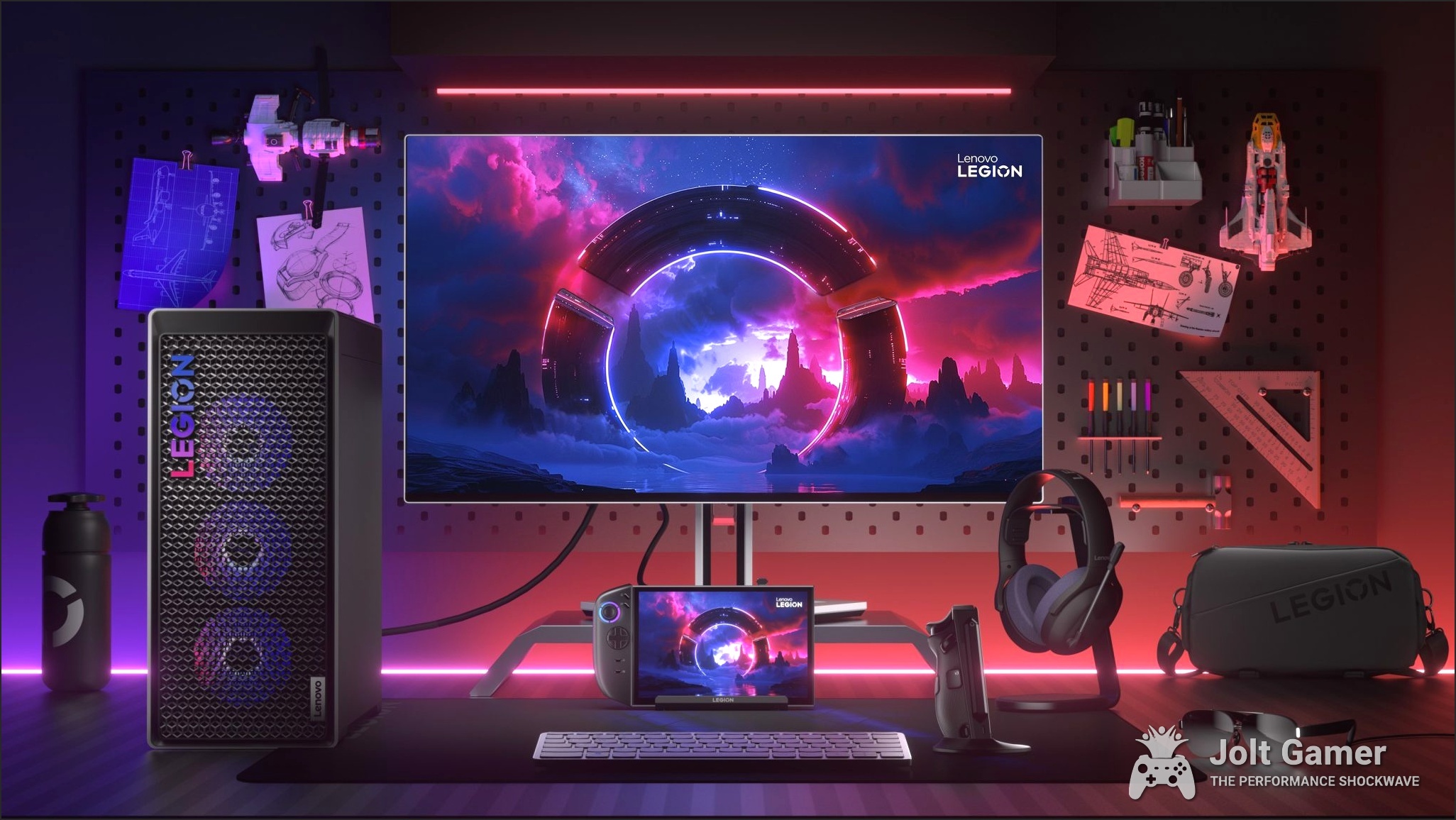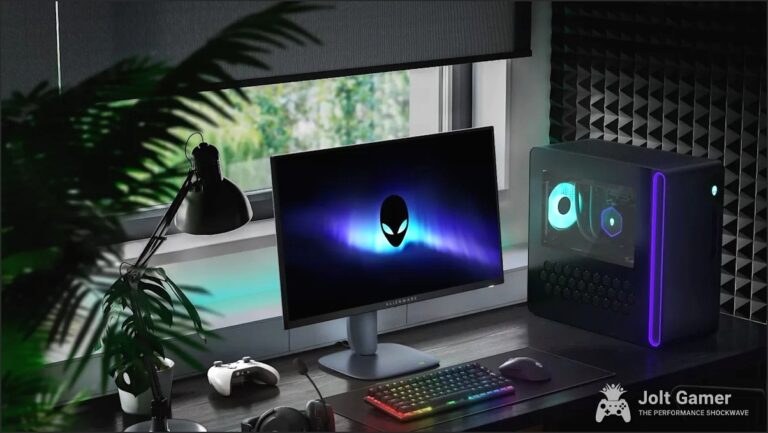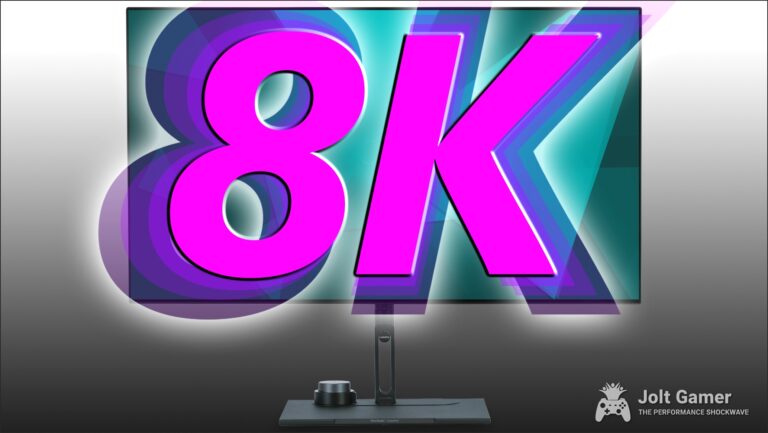The Pixel Perfect Paradox: Your Definitive Guide to 2025’s Cutting-Edge Gaming Monitors
The year 2025 is ushering in an exhilarating era for gaming monitors, promising gamers unparalleled visual fidelity, blistering speed, and truly immersive experiences. From the deepest blacks of OLED to the vibrant brightness of Mini-LED, the technological advancements are nothing short of breathtaking. Yet, this surge of innovation presents a unique paradox: while the potential for incredible gameplay has never been higher, navigating the sheer volume of options comes with significant trade-offs and crucial considerations. As your guide from JoltGamer, I’m here to cut through the noise, offering a definitive analysis to help you make the smartest upgrade for your battle station.
Key Takeaways
- 2025 is a landmark year for gaming monitors, with a surge in high-refresh-rate OLED and Mini-LED displays from major brands like ASUS ROG, Lenovo, Sony, and LG.
- OLED offers unmatched contrast and response times but raises concerns about burn-in and long-term reliability, which manufacturers are actively addressing with new technologies.
- HDR is maturing, but understanding VESA DisplayHDR certifications and backlight technologies (FALD, MLA) is crucial for a truly impactful visual experience.
- The 1440p resolution at 144Hz-240Hz remains a ‘sweet spot’ for competitive PC gaming, balancing visual clarity with GPU performance, while 4K OLEDs target ultimate immersion.
- Brand support, firmware updates, and console compatibility are critical factors often overlooked, leading to significant user frustration when neglected.
The 2025 Monitor Frontier: A Wave of Innovation
The gaming monitor market is undergoing a rapid, almost dizzying transformation, with 2025 poised to be a truly pivotal year. Major players like ASUS ROG, Lenovo, Sony, and LG are relentlessly pushing the boundaries of display technology. We’re seeing an unprecedented focus on advanced OLED panels, incredibly high refresh rates, and significantly enhanced HDR capabilities. From groundbreaking bendable OLEDs that adapt to your viewing preference to 480Hz QHD screens delivering motion clarity previously thought impossible, the options for discerning gamers are more diverse and powerful than ever before. This isn’t just incremental improvement; it’s a generational leap.
- ASUS ROG’s OLED Dominance: ASUS ROG continues to cement its leadership in the OLED gaming monitor space, unveiling new Tandem OLED monitors at Gamescom 2025. This includes the world’s fastest OLED, the PG27AQWP-W, boasting an absurd 540Hz native refresh rate and a 0.03ms GTG response time. Crucially, these new ROG displays feature advanced burn-in mitigation with enhanced brightness and a longer lifespan, thanks to innovations like ASUS OLED Care Pro and Neo Proximity Sensors.
- Lenovo’s Legion Pro OLEDs: At Lenovo Innovation World 2025, Lenovo introduced an impressive trio of Legion Pro OLED gaming monitors: the 32UD-10, 27UD-10, and 27Q-10. These monitors offer up to 280Hz refresh rates and a blazing-fast 0.03ms response time, paired with HDR TrueBlack 400 certification. They are clearly targeting gamers who demand both pixel-perfect fidelity and competitive speed.
- Sony INZONE’s Esports Focus: In a strategic collaboration with esports giant Fnatic, Sony launched the 27-inch 1440p OLED INZONE M10S. This monitor is designed to be tournament-ready, featuring a staggering 480Hz refresh rate and an up to 0.03ms response time for superior motion clarity in competitive titles. Sony also released the upgraded 4K IPS M9 II, emphasizing both competitive performance and robust console optimization.
- LG UltraGear’s Speed Breakthrough: LG Display announced the mass production of its 27-inch 480Hz QHD Gaming OLED panel, setting a new industry benchmark with an ultra-low 0.02ms GTG response time. This pushes the envelope for competitive gaming, delivering exceptionally smooth and sharp content even during the most rapid scene transitions.
- HP OMEN & CORSAIR’s Premium Offerings: Both HP OMEN and CORSAIR continue to offer strong lineups of high-performance monitors. This includes their own compelling OLED and ultrawide options, with a consistent focus on integrating adaptive sync technologies and delivering immersive features that cater to enthusiast gamers.

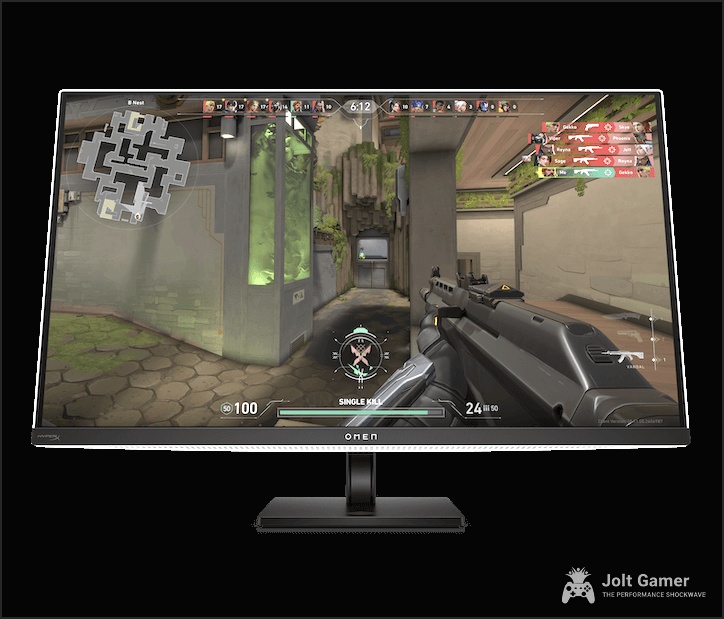
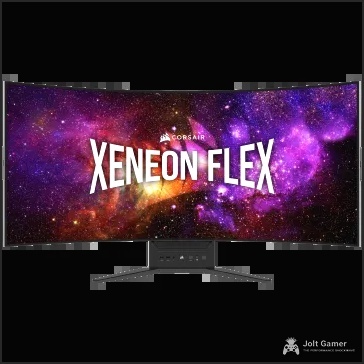
Display Technologies Demystified: OLED, IPS, VA, and Mini-LED
Choosing a gaming monitor starts with understanding the underlying panel technology. Each type offers distinct advantages and disadvantages, profoundly impacting everything from color vibrancy and contrast to response times and viewing angles. While OLED is currently generating the most buzz and pushing performance boundaries, IPS and VA panels continue to hold strong positions in the market, often offering excellent value and catering to specific preferences.
Gaming Monitor Panel Technologies: A Side-by-Side Look
| Feature | OLED | IPS (In-Plane Switching) | VA (Vertical Alignment) |
|---|---|---|---|
| Contrast Ratio | Theoretically Infinite (True Blacks) | Good (but ‘IPS Glow’ can occur) | Excellent (Deep Blacks, typically best among LCDs) |
| Response Time (GtG) | Extremely Fast (0.03ms – 0.02ms) | Fast (typically 1-4ms) | Moderate (can suffer from ‘black smearing’) |
| Color Accuracy & Gamut | Excellent (Vibrant, wide gamut) | Excellent (Wide viewing angles, good color) | Good (Can be vibrant, but viewing angles can affect color) |
| Brightness | Good (often 500-1000 nits peak, improving with Tandem/MLA) | Good (often 300-600 nits peak) | Good (often 300-600 nits peak) |
| Viewing Angles | Excellent | Excellent | Moderate (color shift at extreme angles) |
| Burn-in Risk | Highest (especially with static content) | Very Low | Very Low |
| Ideal Use Case | Competitive gaming, cinematic single-player, content creation (with burn-in mitigation) | Competitive/casual gaming, content creation, general use | Immersive single-player, media consumption (where deep blacks are key) |
| Price Point | Premium | Mid-to-High Range | Budget-to-Mid Range |
While not a panel type itself, Mini-LED technology represents a significant advancement for LCD monitors, offering a compelling high-end alternative. By employing thousands of tiny LEDs for backlighting, Mini-LED displays can achieve much finer local dimming control than traditional Full-Array Local Dimming (FALD) LCDs. This allows them to rival OLED’s incredible contrast in many scenarios, often while reaching significantly higher peak brightness levels. For users wary of OLED burn-in but still demanding top-tier visual performance, Mini-LED is an increasingly attractive option.
Finding Your Sweet Spot: Resolution, Refresh Rate, and Adaptive Sync
Beyond the panel type, resolution and refresh rate are paramount in shaping your overall gaming experience. The ‘best’ combination here depends heavily on the power of your GPU, the types of games you predominantly play, and your competitive aspirations. Furthermore, adaptive sync technologies like NVIDIA G-SYNC and AMD FreeSync are no longer optional extras; they are non-negotiable for achieving smooth, tear-free gameplay that allows you to fully focus on the action.
- 1080p (Full HD): Still a perfectly viable option for budget-conscious builds and competitive esports players who prioritize maximum frame rates on less powerful hardware. High refresh rates (144Hz+) are easily achievable and deliver fluid motion.
- 1440p (QHD/2K): Often considered the ‘sweet spot’ for PC gaming. It offers a significant visual upgrade over 1080p without the extreme GPU demands of 4K, allowing for high refresh rates (144Hz-240Hz, and even 480Hz on new OLEDs) on mid-to-high-end graphics cards. This balance makes it ideal for many players seeking a competitive edge without sacrificing too much visual fidelity.
- 4K (UHD): Delivers incredible detail and immersion, making it ideal for cinematic single-player games, visually stunning open worlds, and next-gen console play. However, achieving high refresh rates (120Hz-160Hz is common, with 240Hz on new OLEDs) at this resolution still requires a very powerful GPU.
- Ultrawide (21:9 or 32:9): Offers an expansive, cinematic field of view that is particularly immersive for racing, simulation, and open-world games. Resolutions like 3440×1440 (WQHD) or 5120×1440 (DQHD) provide a unique, peripheral-filling experience but demand robust hardware to drive effectively.
- Refresh Rates (Hz): Higher is generally better for competitive gaming. A 144Hz monitor is a great baseline for fluid gameplay, 240Hz is the standard for serious esports, and the new 480Hz displays (like those from LG and Sony OLEDs) represent the bleeding edge for ultimate motion clarity, giving you every possible advantage.
- Adaptive Sync (G-SYNC/FreeSync): Absolutely essential for eliminating screen tearing and stuttering. These technologies synchronize the monitor’s refresh rate with your GPU’s frame rate, ensuring a consistently smooth visual experience. Always ensure your chosen monitor supports the adaptive sync technology compatible with your graphics card.
JoltGamer’s Pro Tip: The 1440p Sweet Spot
For the majority of PC gamers aiming for a balance of visual quality and high frame rates without breaking the bank on a top-tier GPU, a 27-inch 1440p monitor with a 144Hz-240Hz refresh rate and adaptive sync remains the optimal choice. It provides a noticeable upgrade over 1080p and allows your GPU to breathe, ensuring smoother, more consistent performance in demanding titles.
HDR Unpacked: Beyond the Buzzwords
High Dynamic Range (HDR) is arguably the most impactful visual upgrade in recent years, offering brighter highlights, vastly deeper shadows, and a dramatically expanded color palette compared to Standard Dynamic Range (SDR). However, the reality is that not all HDR implementations are created equal. Understanding VESA’s DisplayHDR certifications and the underlying backlight technology is absolutely crucial to avoid disappointment and ensure you’re getting a truly impactful visual experience.
- SDR vs. HDR: SDR displays typically max out around 300 nits of brightness and use the sRGB color space. HDR, by contrast, pushes peak brightness to 400-1600+ nits and utilizes the wider DCI-P3 color space, aiming towards the BT.2020 color model. This delivers a more lifelike image, mimicking the massive dynamic range seen in real life.
- VESA DisplayHDR Certifications: These tiered certifications (e.g., DisplayHDR 400, 500, 600, 1000, 1400) indicate minimum peak brightness and backlight dimming capabilities. Higher numbers generally translate to a significantly better HDR experience. While DisplayHDR 400 offers a basic improvement, DisplayHDR 600 is often recommended for gamers on a budget as it provides robust local dimming and similar color characteristics to DisplayHDR 1000.
- Local Dimming is Key: For LCDs, Full-Array Local Dimming (FALD) with many zones (e.g., 384, 512, 1152) is vastly superior to edge-lit or global dimming. It allows different parts of the screen to simultaneously output varying brightness levels, achieving true blacks alongside bright highlights. OLEDs, with their self-emissive pixels, achieve ‘infinite’ contrast with pixel-level dimming, effectively acting as millions of individual dimming zones.
- HDR Formats: HDR10 is the standard for Windows PCs and widely supported. Dolby Vision offers superior per-display tone mapping for enhanced detail and color but is rare on PC monitors, though supported by Apple macOS. HDR10+ (a Samsung proprietary format) and HLG (Hybrid Log Gamma, primarily for TVs) are also present but often converted to HDR10 on PC.
- Hardware & Content: To fully experience HDR, you need an HDR-compatible display, an HDR-capable GPU (Nvidia GTX 10-series+, AMD RX Vega+), and HDR content (games, streaming, Blu-rays). Console users also need to ensure their monitors support appropriate settings like HGiG for optimal tone mapping and to avoid frustration with inconsistent HDR performance.
The OLED Burn-in Question: Reality vs. Hype
The stunning visuals of OLED monitors, with their inky blacks and vibrant colors, come with a well-known caveat: the risk of image burn-in. While modern OLED panels and manufacturers have made significant strides in mitigation, it remains a valid concern, particularly for users with static UI elements or those who keep their monitors on for extended periods. For any potential OLED owner, understanding what burn-in is and how to prevent it is absolutely crucial to protect your investment.
- What is Burn-in? Burn-in, or permanent image retention, is a permanent discoloration caused by the uneven aging of pixels due to static images displayed for extended periods. In OLEDs, individual pixels emit light and can degrade unevenly, leading to visible ghost images.
- OLED vs. LCD: OLEDs are inherently more susceptible to burn-in due to their self-emissive pixels. LCDs can experience temporary image retention, but true permanent burn-in is much rarer and usually related to the backlight aging unevenly.
- Mitigation Technologies: Modern OLEDs incorporate sophisticated features to combat burn-in. These include pixel shifting (subtly moving the image), screen sampling, logo dimming (reducing brightness for static logos), and automatic screen timeouts. ASUS ROG’s new OLEDs, for example, boast ‘ASUS OLED Care Pro,’ which includes proprietary custom heatsinks, HDR-optimizing firmware, and an advanced Neo Proximity Sensor that detects user distance and dims the screen to prevent burn-in.
- User Best Practices: As an owner, you can significantly minimize the risk. Regularly vary your content, utilize screen savers, enable auto-sleep features, and avoid prolonged display of static elements (like desktop icons or game HUDs) at high brightness. Lower brightness settings can also contribute to prolonging panel life.
“I returned my monitor because I can’t live with a monitor that doesn’t do anything when booting my pc. I literally have to pull the dp cable out from the gpu every time to get a picture on my screen.”
“if you got the hardware go for 32 inch 4k OLED, preferably glossy, its eye candy af… honestly stay away from asus, if an oled fails its from them dunno why, but there are enough subs about asus ones failing.”
Top Picks for 2025: JoltGamer’s Recommendations
Based on the latest announcements and market trends, here are our top recommendations for gaming monitors in 2025. We’ve focused on models that offer a strong balance of performance, features, and value, while acknowledging the cutting-edge options that push the boundaries of what’s possible.
- Best Overall OLED (High-End): ASUS ROG Swift OLED PG27AQWP-W / Sony INZONE M10S
- Why: These monitors represent the pinnacle of competitive gaming displays. The ASUS ROG Swift OLED PG27AQWP-W offers unrivaled speed with its 540Hz QHD panel and cutting-edge OLED tech with advanced burn-in mitigation. The Sony INZONE M10S, developed with Fnatic, provides a similar 480Hz QHD OLED experience, perfectly tuned for esports. Both are ideal for competitive players with top-tier GPUs who demand the absolute best motion clarity.
- Best Value 1440p OLED: Lenovo Legion Pro 27Q-10
- Why: For gamers seeking a more accessible entry into the world of OLED, the Lenovo Legion Pro 27Q-10 is a superb choice. It delivers a fast 280Hz refresh rate and 0.03ms response time at 1440p, offering superb contrast and vibrant color without the absolute premium price tag of its faster counterparts. This is a fantastic balance of performance and value.
- Best 4K Immersive: Lenovo Legion Pro 32UD-10 / Sony INZONE M9 II
- Why: If stunning visuals in single-player games and next-gen console play are your priority, these monitors excel. The Lenovo Legion Pro 32UD-10 offers a breathtaking 4K OLED experience at 240Hz. Alternatively, the Sony INZONE M9 II provides an enhanced 4K IPS experience with advanced Full-Array Local Dimming and robust console optimization, ensuring deep blacks and brilliant highlights for true immersion.
- Best Ultrawide: CORSAIR XENEON FLEX 45WQHD240
- Why: The unique bendable OLED panel of the CORSAIR XENEON FLEX offers unparalleled immersion and flexibility. Combined with a high 240Hz refresh rate and WQHD resolution, it provides an expansive, cinematic gaming canvas that can adapt to your preferred curvature, perfect for racing, simulation, or open-world titles.
- Best High Refresh Rate IPS: HP OMEN 27qs / LG UltraGear 27GR95QE-B (or similar)
- Why: For those who desire high refresh rates (240Hz+) but prefer to avoid the burn-in concerns associated with OLED, high-performance IPS panels remain an excellent choice. Monitors like the HP OMEN 27qs or the LG UltraGear 27GR95QE-B offer superb motion clarity, excellent color accuracy, and wide viewing angles, making them versatile for competitive and casual gaming alike.
Smart Monitor Buying Tips
- Research Retailers: Always look for deals from major retailers like Amazon, Best Buy, and direct from manufacturers (Samsung.com, LG.com, Sony.com). Prices and promotions can vary significantly.
- Check Return Policies: Especially for high-value items, thoroughly understand the return window and conditions. This is crucial for peace of mind, particularly with new technologies.
- Warranty Matters: Pay close attention to burn-in warranties for OLED monitors and general product support. A robust warranty can save you significant frustration and cost down the line.
- Read User Reviews: Beyond professional reviews, community feedback (like the Fandom Pulse) offers invaluable real-world insights into long-term reliability and common issues that might not appear in initial tests.
- Future-Proofing: Consider connectivity. HDMI 2.1 is essential for unlocking the full potential of next-gen consoles, and DisplayPort 2.1 is becoming increasingly important for high-bandwidth PC gaming at extreme resolutions and refresh rates.
The Future is Bright (and Fast), But Choose Wisely
2025 is set to profoundly redefine the gaming monitor experience, with OLED technology leading the charge towards unprecedented visual fidelity and speed. However, this exhilarating era of innovation also demands a more discerning and informed approach from consumers. While the allure of pixel-perfect blacks and lightning-fast response times is undeniably strong, understanding the nuances of HDR implementation, the realities of burn-in mitigation, and the critical importance of solid brand support and firmware updates is paramount. By leveraging this definitive analysis, gamers can confidently navigate the cutting-edge monitor landscape, ensuring their investment delivers truly pixel-perfect gaming for years to come. Don’t just chase the highest numbers; understand what truly matters for your specific setup and play style.
Frequently Asked Questions
Is OLED burn-in still a major concern in 2025?
While modern OLED monitors incorporate advanced mitigation technologies (pixel shifting, logo dimming, heatsinks, proximity sensors), the risk of burn-in, particularly with prolonged static content at high brightness, is still present. It’s less prevalent and less likely to occur than with older generations, but remains a factor to consider for users with specific usage patterns. Always check the manufacturer’s warranty regarding burn-in, as policies can vary.
What’s the difference between DisplayHDR 400 and DisplayHDR 1000?
The VESA DisplayHDR certification tiers indicate minimum peak brightness and backlight capabilities. DisplayHDR 400 offers a noticeable but basic HDR experience. DisplayHDR 1000, however, requires a minimum peak brightness of 1000 nits and robust local dimming (often Full-Array Local Dimming with many zones), delivering a significantly more impactful HDR experience with deeper blacks and brighter highlights. DisplayHDR 600 is often recommended for gamers on a budget as it offers similar color characteristics to 1000 with local dimming, providing a strong balance of performance and value.
Is 4K or high refresh rate more important for gaming?
This depends entirely on your priorities and the games you play. For competitive, fast-paced games (FPS, esports), a high refresh rate (144Hz+) is generally more impactful for motion clarity and responsiveness, giving you a tangible competitive edge. For visually stunning single-player games where immersion is key, 4K resolution offers superior detail and clarity. Many new monitors, especially OLEDs, now offer both high refresh rates and 4K resolution, but these require very powerful GPUs. For most, 1440p often provides the best balance of visual fidelity and frame rate.
Do I need HDMI 2.1 for next-gen consoles?
Yes, for PlayStation 5 and Xbox Series X/S, HDMI 2.1 is crucial to unlock their full potential. It supports key features like 4K resolution at 120Hz, Variable Refresh Rate (VRR), and Auto Low Latency Mode (ALLM). Without HDMI 2.1, you’ll be limited to lower resolutions or refresh rates for these advanced features, missing out on the optimal console experience.
Why is brand support and firmware important for monitors?
As seen with real-world user experiences, poor brand support and a lack of firmware updates can lead to persistent issues like flickering, inconsistent HDR performance, or even boot-up problems. Good firmware can address bugs, improve performance, enhance burn-in mitigation, and even add new features. A brand’s commitment to post-purchase support is a critical, though often overlooked, aspect of a monitor’s long-term value and your overall satisfaction.

